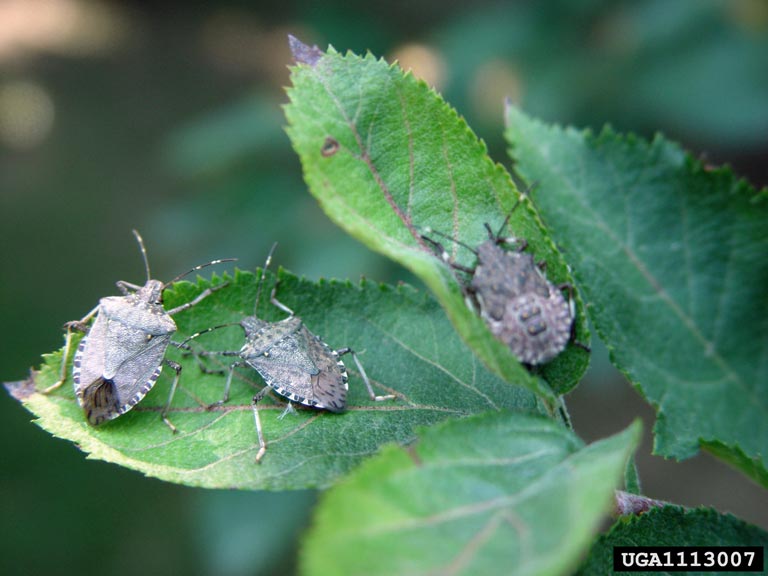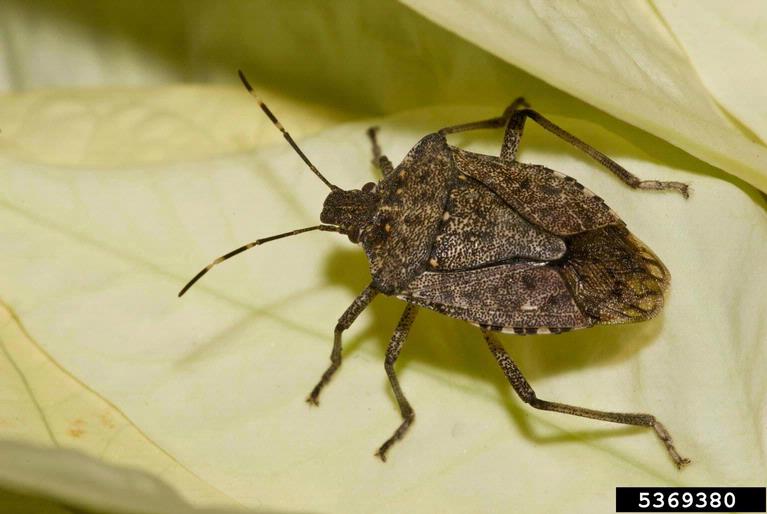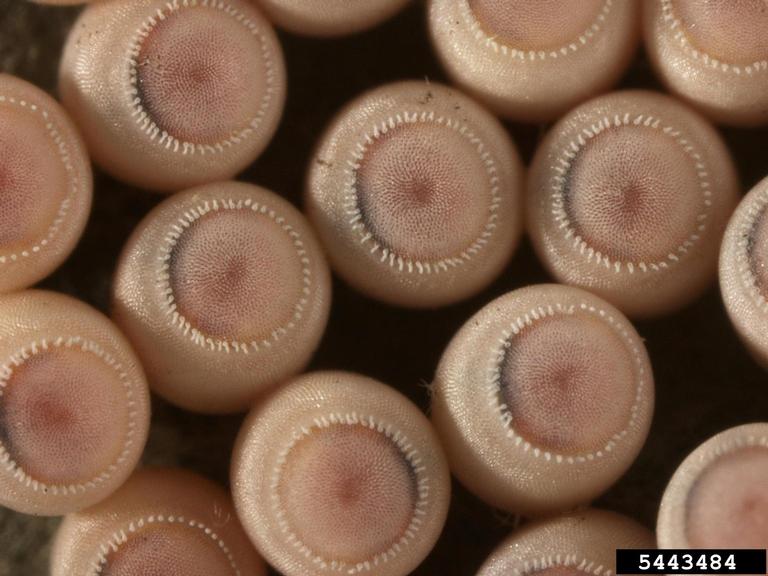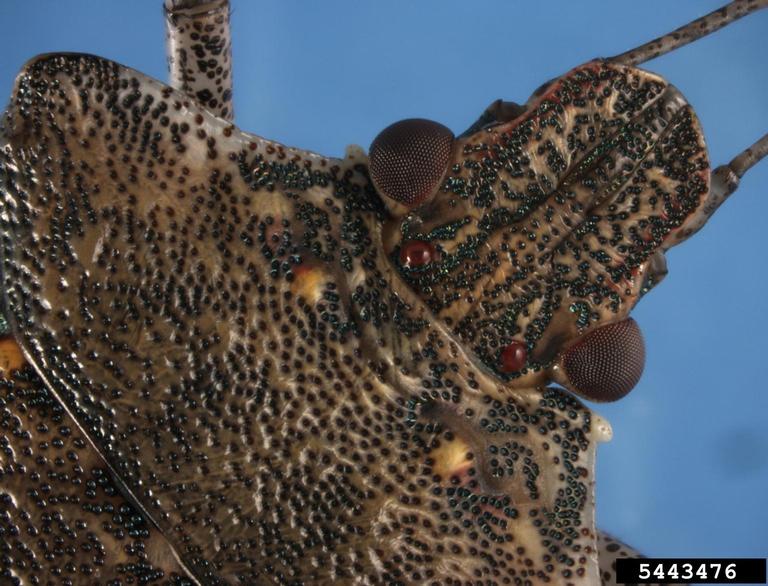Common name: Brown Marmorated Stink Bug
Author(s): Michael Toews, Brett Blaauw, Dan Suiter, Richard Hoebeke, Entomologists, University of Georgia, 2022
Description
Immature stages: The eggs of the brown marmorated stink bug (BMSB) are a light green or light blue color, 1 mm in diameter, and are laid in clutches of approximately 28 eggs. Eggs are usually located on the underside of the leaves of host plants. As the embryo develops it may become visible through the egg, with the eyes appearing as two red spots.
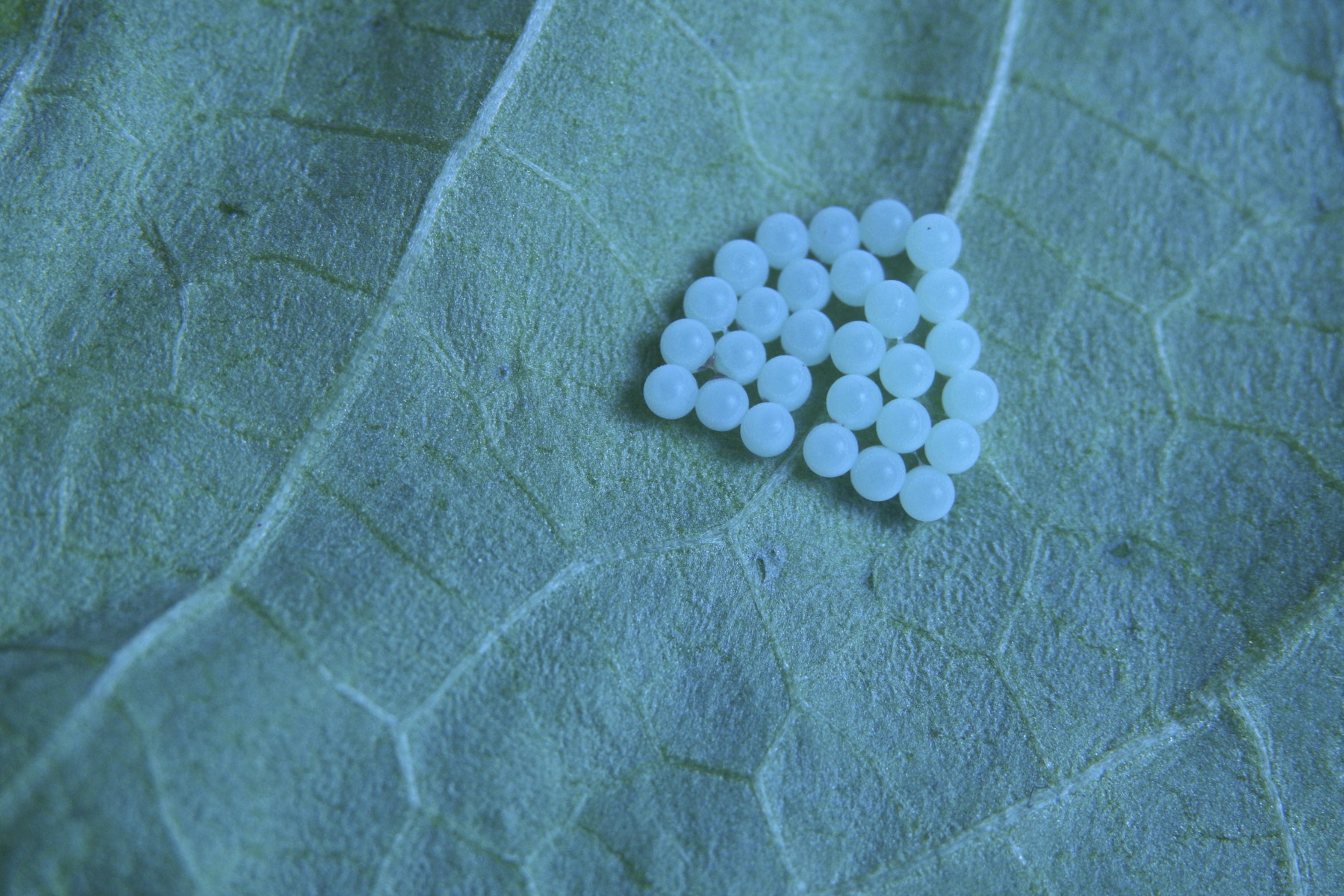
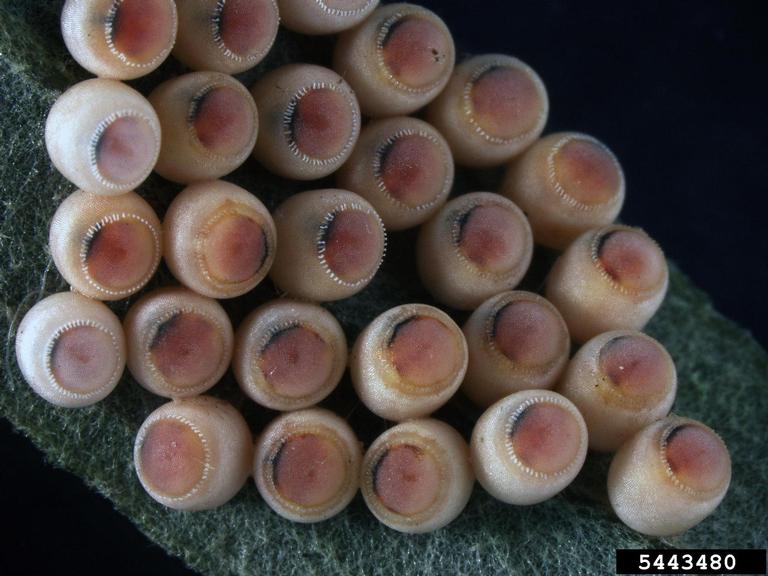
The first instar nymphs are approximately 2.4 mm in length, with a black head and thorax and an orange-red abdomen. Following the transition to the second instar, the nymphs lose a majority of their orange-red coloring. Second-instar nymphs appear dark, with rough spiny projections along the lateral edge of the thorax. Wing buds begin to develop with each successive molt. Later instars have a black-to-gray base coloration with noticeable spines along the pronotal margins, as well as white bands on the legs and antennae.
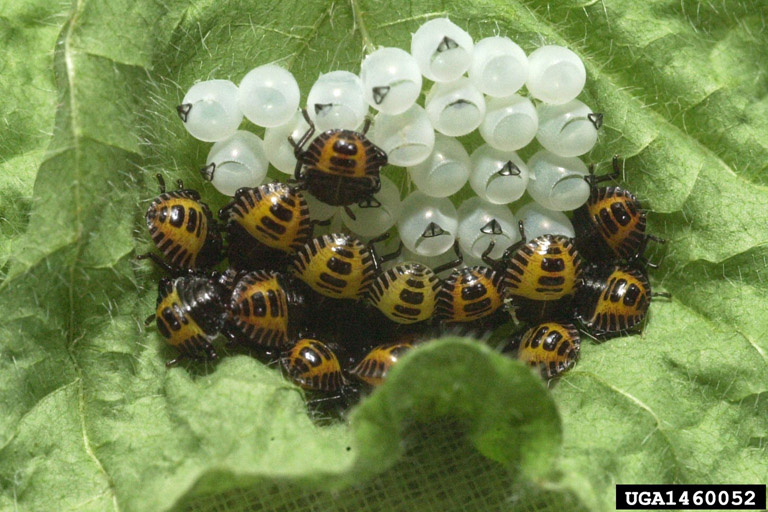

Adult stages: Adult BMSB are larger than most native stink bug species, ranging from 12 to 17 mm in length. Brown marbled- or mottled-colored. Key features for identification of the adult include white bands on the antennae and legs, no humeral (shoulder) spines, and alternating dark and light bands on the margin of the abdomen.
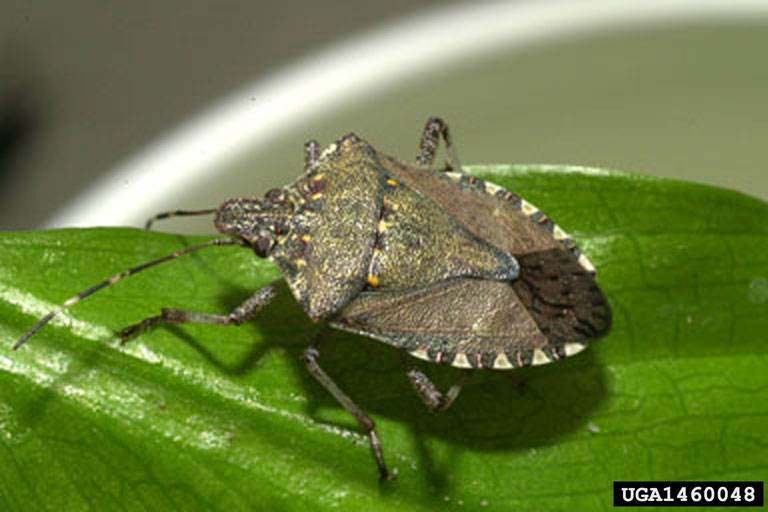
(Photo: Bugwood Images)

(Photo: University of Georgia IPM Program)
Biology
Life Cycle: Development from egg to adult takes approximately 40 to 60 days, depending on temperature and photoperiod. After hatching, first instar nymphs may aggregate around the egg clutch before molting and dispersing to feed. Adults can produce multiple egg clutches throughout their lifespan. Winter diapause is a crucial component of the brown marmorated stink bug life cycle. Brown marmorated stink bugs respond to shortening day length during fall by entering into diapause. During this period adult reproductive activity ceases as the stink bugs conserve resources to survive the winter. Only adults enter diapause and survive through the winter. Increased temperatures and day length in the spring signal an end to the dormant period and adult brown marmorated stink bugs will leave their overwintering sites in search of food. In warmer climates, several generations per year are possible, though in most of its North American range the brown marmorated stink bug has one to two generations per year.
Distribution: The BMSB is an invasive insect pest that is native to Asia (China, Japan, Korea, and Taiwan) and has become established in north and central Georgia. The pest was first reported in the United States in 2001 in Lehigh Co., Pennsylvania, but had been observed by homeowners in that area since at least 1996. Reproducing populations are particularly troublesome in the Northeast, mid-Atlantic and Pacific Northwest. Range expansion is facilitated by hitchhiking on vehicles and through commerce; additionally, there are few natural enemies established in the United States to control the populations.
Damage
The BMSB has the potential to cause damage to several crops, including tree fruit, nuts, vegetables, and row crops. During outbreak years the BMSB has caused significant losses to tree fruit producers, damaging apples, peaches, and pears. Vegetable producers have experienced economic damage, with feeding reported on sweet corn, beans, and tomatoes. Row crops such as field corn and soybean have also been affected with damage occurring near field margins adjacent to wooded areas that serve as habitat for BMSB. The appearance of crop injury varies depending on crop type. Feeding on tree fruit, nuts, and some vegetables can lead to corky spots in flesh directly below the feeding site. Feeding can also cause discoloration, necrosis, or chlorotic spots due to tissue damage. Feeding on developing fruit, particularly peaches, can cause cat facing. In most cases feeding by nymph and adult stages renders the fruit unmarketable. insects have been found in trees and in houses, where they produce a pungent, malodorous chemical.
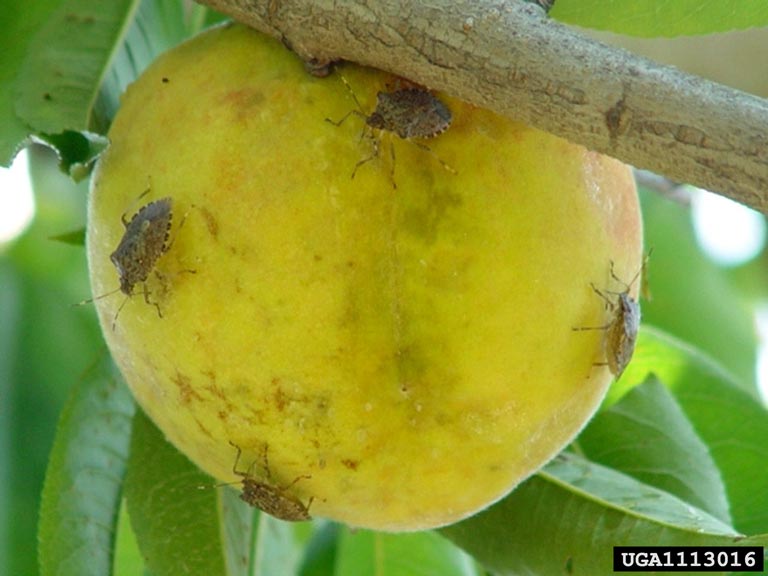
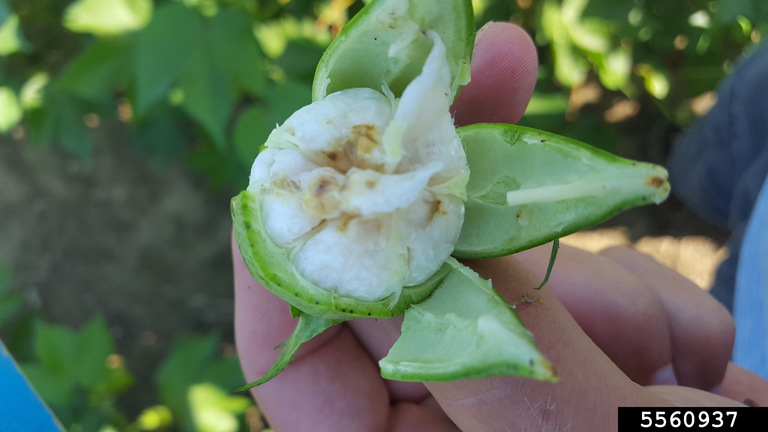
Management
Management has primarily relied on the use of broad-spectrum insecticides. Excessive chemical control has interrupted established IPM programs for several crops. Because pesticides that are most effective against BMSB are often toxic to natural enemies, pollinators and other beneficial insects, strategies to reduce the pesticides used for control have been developed, such as the use of border sprays, which take advantage of increased pest densities observed on border rows of crops, especially when borders are adjacent to forested areas. Growers achieve equivalent control by directing sprays to areas where pest populations are highest and reducing the amount of pesticides in areas where density is lower. The Discovery of the aggregation pheromone has allowed researchers to design lures that attract BMSB to the vicinity of the lure. Combined with traps, including black pyramid traps and sticky traps, lures can allow growers to determine when stink bug populations are at levels that warrant pesticide applications.
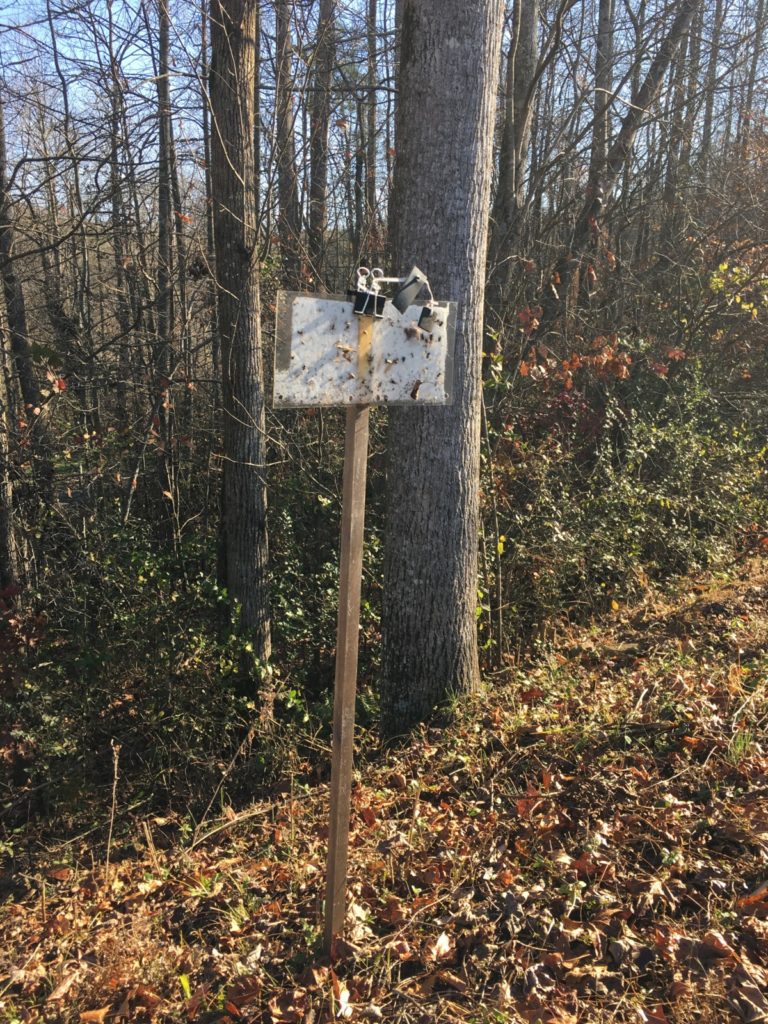
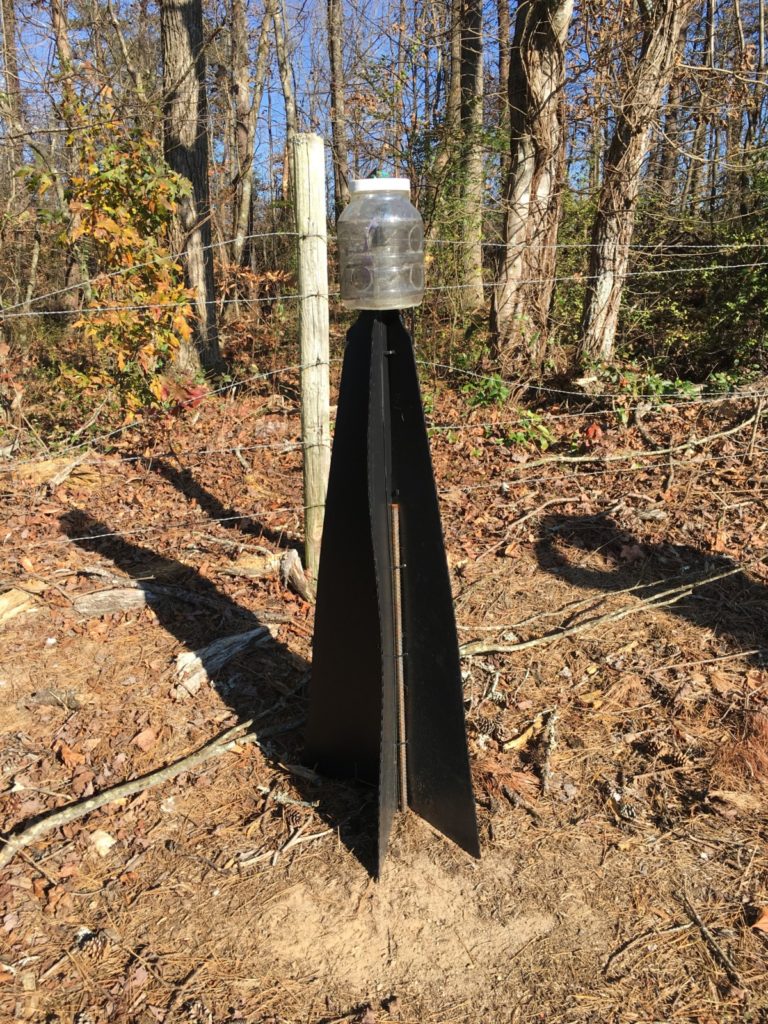
Regarding egg parasitoids, the classical biocontrol agent, Trissolcus japonicus, is currently only allowed to be released in states where it arrived “naturally” and is already found. As of November 2022, this parasitic wasp has not been found in Georgia, therefore has not been released as a biological control method. However, there are a variety of other native parasitic wasp species that attack BMSB eggs in Georgia. Although the amount of parasitism ranges, in some cases, upwards of 68% of eggs parasitized has been observed.
Management of BMSB in homes and buildings is most effective when implementing proactive measures. Before BMSB begin to seek refuge indoors (in the Fall), take action to (1) seal all cracks 1/8 wide or wider, and (2) spot spray around all potential entry points with an appropriately labeled residual spray. Reapply insecticide treatments, per label specifications, through the end of November. Interventions should be implemented early enough (mid-September) so that preventative measures are in place before the onset of stink bug migration indoors. It is especially important to make sure all windows are screened, that doors remain closed, and door sweeps are installed on all exterior doors. If bugs get inside the best solution is to vacuum them. Insecticide treatments indoors are not recommended. If bugs die inside walls or in attics their carcasses can accumulate and attract other insects that eat them, especially carpet beetles.
Additional Resources
- Management of Brown Marmorated Stink Bug in US Specialty Crops
- Biology and Management of BMSB in Ornamental Landscapes
Additional Bugwood.org Images
